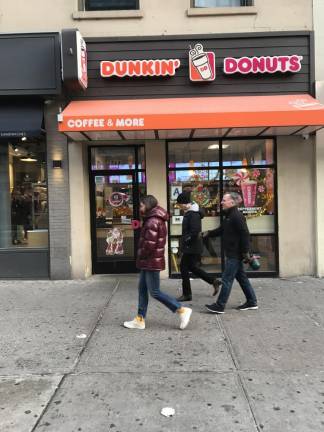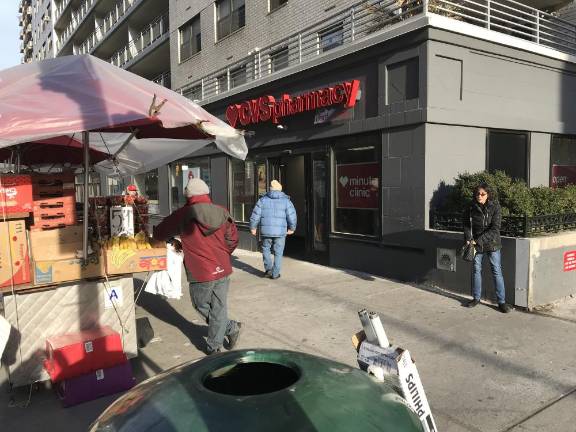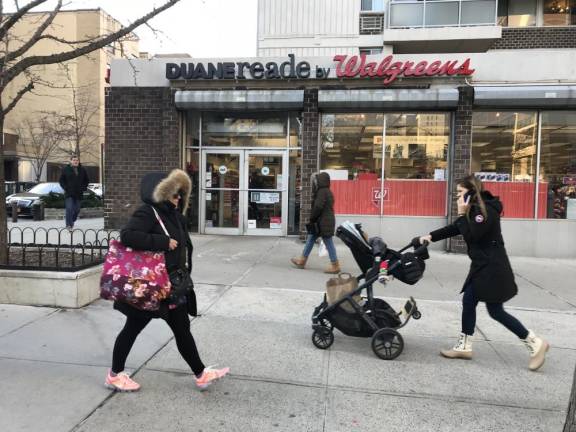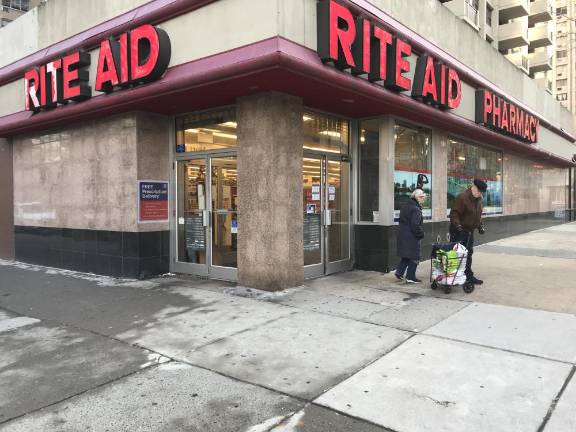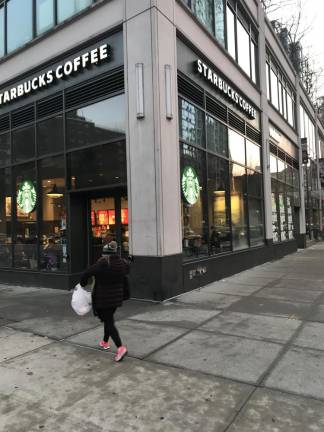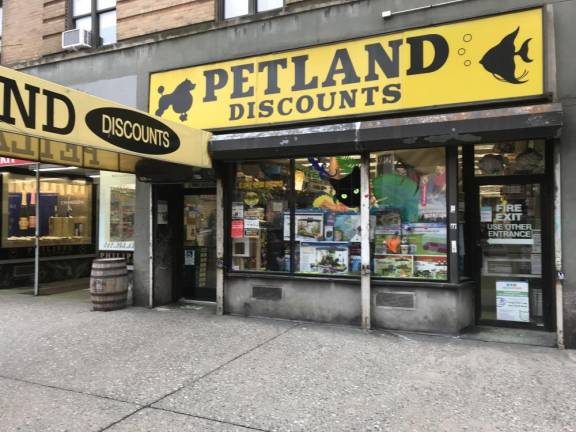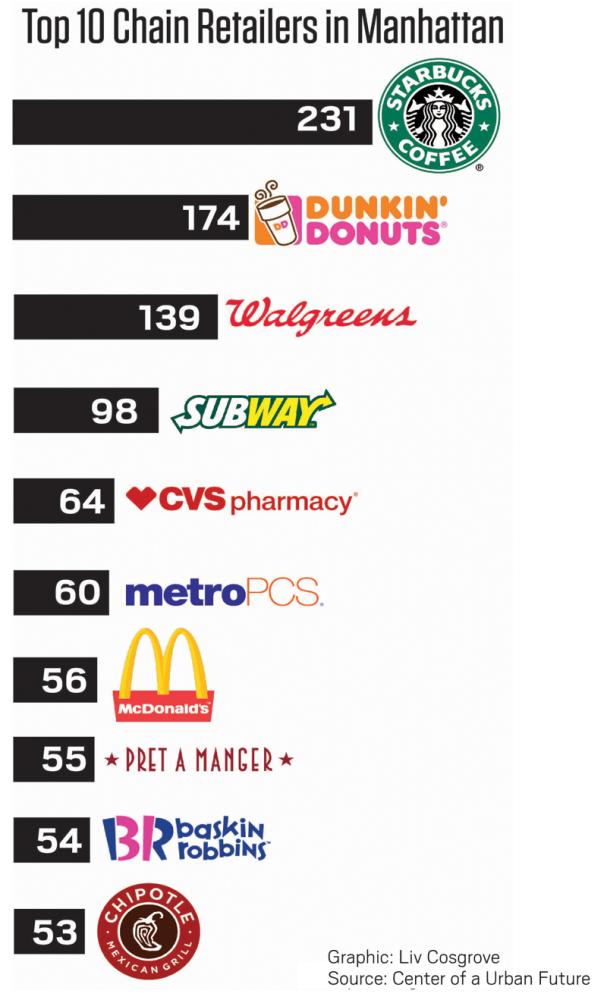Chain Reaction Sparks Retail Meltdown
Scores of national brands are shrinking their footprints and others are disappearing from the landscape in the biggest mercantile shakeout in Manhattan in more than a decade
Remember Radio Shack? In 2014, the popular electronics chain boasted 30 shops in all the retail corridors of Manhattan. Today, there are zero.
Also vanished from the island’s shopping scene is Payless. Five years ago, the discount footwear chain had 15 stores. Now, there are none.
And Petland Discounts met a similar fate. The seller of parakeets, fish tanks, terrariums and guinea pig food shrank from 11 outlets to zilch.
Each had a long history – Radio Shack was founded in 1921, Payless in 1956, Petland in 1965 – and the demise of all three highlights a brutal trend in the transformation of the borough’s retail landscape.
It isn’t just locally owned bookstores, barbershops, thrift shops, Judaica shops, bars, bodegas, restaurants, green grocers and mom-and-pops of every stripe that have fallen victim to brick-and-mortar retrenchment.
It is also the national retail chain stores – which typically occupy larger blocks of space and can leverage bank financing to secure better deals on rent – that are bailing out of leases and shuttering shop locations.
The number of chain outlets in Manhattan dwindled by 3.1 percent, a loss of 91 store locations, from 2,982 in 2018 to 2,891 in 2019, a new report by the Center for an Urban Future found.
That accelerates a 2.3 percent decline recorded the previous year, in which 67 national retail stores closed their doors – and it means a sharp 5.4 percent decrease, marked by 158 closures, took place from 2017 to 2019, according to the think tank’s data.
“There has never been a time when Manhattan posted a decline two years in a row,” said Eli Dvorkin, the editorial and policy director for the Center, which has been researching retail chains since 2007 and issuing annual reports since 2008.
“By contrast, in 2010, during the recovery from the Great Recession, there was a 5.1 percent increase in the number of national chain store locations in Manhattan,” Dvorkin added.
The End of Crumbs, Gold's and Chevy's
The data in the current report, “State of the Chains, 2019,” shows that Manhattan has the city’s highest concentration of chain stores, at 127 locations per square mile, five times greater than the citywide average of 26 locations per square mile.
That dominant retail presence meant that in 2018, when the other four boroughs saw a modest uptick in chain retailers, the city as a whole still saw its first-ever overall decline, completely fueled by Manhattan. In 2019, all five boroughs lost chains, 304 stores shuttered, and the record 3.7 percent contraction pared the citywide tally to 7,832 chain locations from 8,136 a year ago.
“As the explosive growth in the city’s chain stores cooled, Manhattan was the canary in the coal mine – the leading indicator that there was trouble in the chain space, and all was not well,” Dvorkin said.
Indeed, a record 18 national retailers went into near-death spirals in 2018, closed all their city locations and were subsequently removed from the Center’s 2019 analysis. (Some still maintain stores outside New York.)
The casualties include Crumbs Bake Shop, which was founded on the Upper West Side; fitness club Gold’s Gym and fast-food mecca Chevy’s Fresh Mex, which each closed locations in the Theater District; and quirky novelty retailer Brookstone, which had been based in Battery Park City.
It was also a terrible year for national shoe stores: Payless filed for its second and final bankruptcy in February as the vestigial traces of Nine West, Stride Rite, Rockport, Aerosoles, Easy Spirit and Traffic Shoes evaporated from the cityscape.
“I can remember when there used to be wall-to-wall shoe stores up and down Broadway,” said Les Dweck, a retail and commercial broker who operated in midtown and retired in 2003. “They were unavoidable, and that was the idea. Now, the local shoe store is called Amazon.”
The Decline of Subway, Ricky's and McDonald's
The Center’s 12th annual ranking of national chains showed that more Manhattan retailers are shrinking their footprints than expanding them. Among the key findings of the report:
* RETREAT OF THE MERCHANDISE RETAILERS. Numerous chains that sell clothing, cosmetics, accessories, jewelry, vitamins, pet supplies and household goods posted steep declines in 2019.
Take Ricky’s, the beauty supply, costume and accessories chain, which had 18 Manhattan stores in 2009 and grew to 24 in 2014. Since then, it has shed all but its two locations in Soho and Union Square.
The clothing trade has also been battered. J. Crew, for instance, which now has 10 stores on the island, closed three between 2018 and 2019, and Lululemon Athletica, which has 11 stores today, shut two.
The Gap closed three locations, H&M two – and Bebe, Eileen Fisher, Dress Barn, Chico’s, Charlotte Russe, Forever 21, Free People and the Men’s Warehouse each dropped a single store.
* PULLBACK OF THE FAST-FOOD PURVEYORS. Broad-based, year-over-year declines were also reported in 2019 for national restaurant chains, pizza parlors, bakeries, juice bars and ice cream and yogurt shops.
Subway, the omnipresent fast-food giant, posted dramatic losses in 2019, closing 11 of its Manhattan franchises. The company still has 98 stores, the fourth largest tally by number of locations in the borough – but it had 171 in 2014, meaning that it pared 73 outlets and diminished its footprint by 43 percent over five years.
McDonald’s fared slightly better. The seventh largest chain retailer in Manhattan, it closed two stores in 2019 and has 56 locations today, down from 69 in 2014, a decrease of 19 percent.
Not all the changes in the national fast-food trade were negative: Chick-fil-a doubled its Manhattan presence, from five stores in 2018 to 10 today, while Taco Bell jumped from 11 outlets in 2018 to 15 in 2019.
* COFFEE IS KING, DONUTS A CLOSE SECOND. Coffee, tea and donut chains were a rare bright spot, and two of them maintained dominance in Manhattan as No. 1 and No. 2 respectively in the borough’s rankings of the top 10 national retailers.
Starbucks held the top post by a comfortable margin with 231 locations in 2019, a decline of a single shop from the previous year, while Dunkin’ Donuts took second place with 174 stores, debuting eight new locations over the past year.
The No. 3 slot went to Duane Reade / Walgreens, the top pharmacy in Manhattan, with 139 stores. But its growth spurt stands in contrast to Rite Aid, which has been shuttering shops since Walgreens acquired it, shriveling from 36 in 2014 to 27 today.
* THE SUDDEN RISE OF A RETAIL ZIP CODE. Hudson Yards came out of nowhere as a brand-new shopping destination, and now, the zip code where it is housed, 10001, boasts the highest number of national chain stores both in the borough and citywide for the first time.
Since 10001 includes Herald Square, it was always rich in retail. Not like today: The zip code’s 183 locations mark a 13 percent gain from 162 in 2018 – and it had to overtake the 170-store Staten Island Mall, which lost shops, in order to claim the top position.
Boding ill for the future of national shops in Manhattan is one stark line from the Center’s report: “Overall, our analysis found that more of the city’s chain retailers are shrinking than are growing,” it says.
invreporter@strausnews.com
“As the explosive growth in the city’s chain stores cooled, Manhattan was the canary in the coal mine.” Eli Dvorkin, Center for an Urban Future
